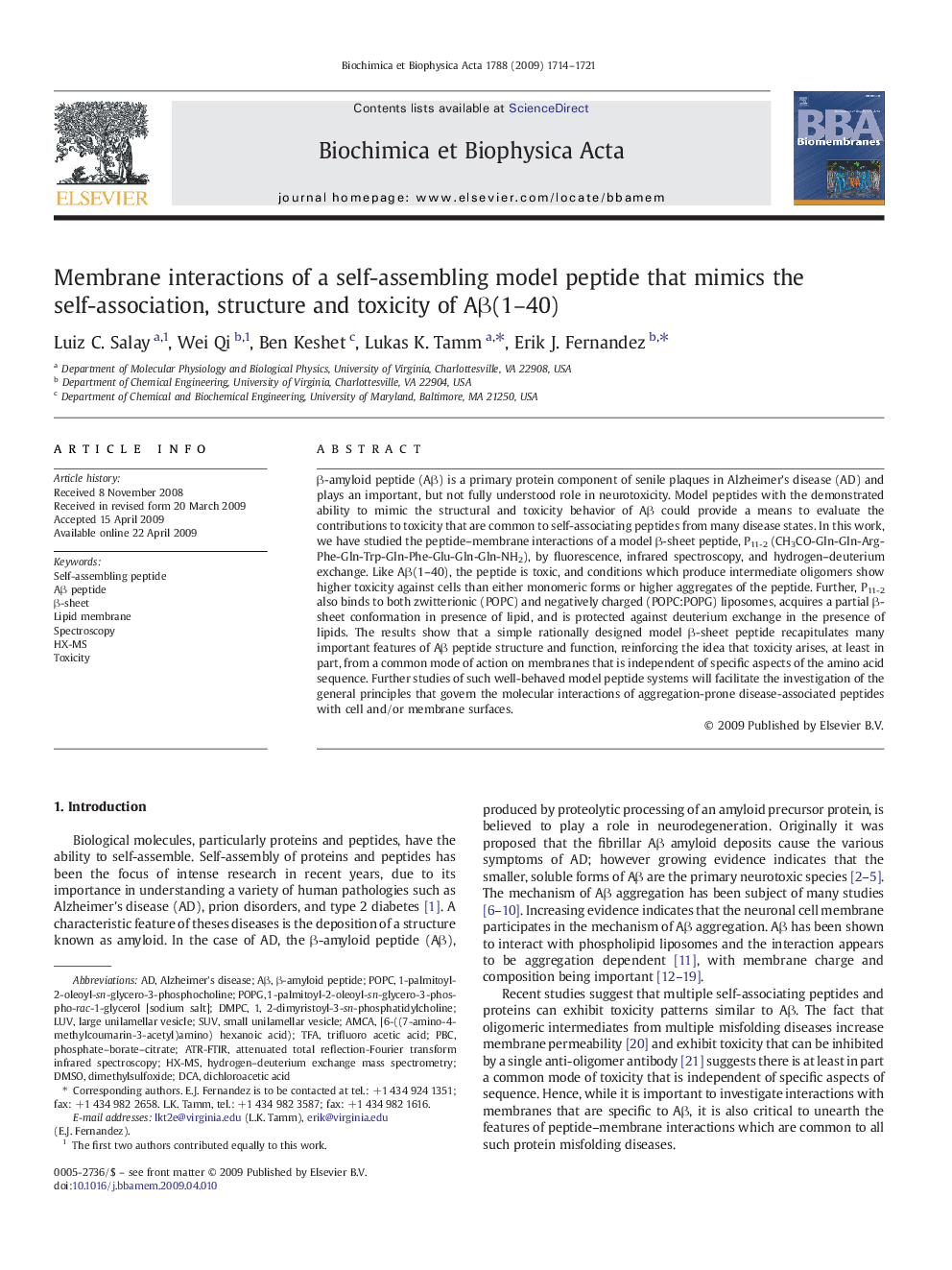| Article ID | Journal | Published Year | Pages | File Type |
|---|---|---|---|---|
| 1944943 | Biochimica et Biophysica Acta (BBA) - Biomembranes | 2009 | 8 Pages |
β-amyloid peptide (Aβ) is a primary protein component of senile plaques in Alzheimer's disease (AD) and plays an important, but not fully understood role in neurotoxicity. Model peptides with the demonstrated ability to mimic the structural and toxicity behavior of Aβ could provide a means to evaluate the contributions to toxicity that are common to self-associating peptides from many disease states. In this work, we have studied the peptide–membrane interactions of a model β-sheet peptide, P11-2 (CH3CO-Gln-Gln-Arg-Phe-Gln-Trp-Gln-Phe-Glu-Gln-Gln-NH2), by fluorescence, infrared spectroscopy, and hydrogen–deuterium exchange. Like Aβ(1–40), the peptide is toxic, and conditions which produce intermediate oligomers show higher toxicity against cells than either monomeric forms or higher aggregates of the peptide. Further, P11-2 also binds to both zwitterionic (POPC) and negatively charged (POPC:POPG) liposomes, acquires a partial β-sheet conformation in presence of lipid, and is protected against deuterium exchange in the presence of lipids. The results show that a simple rationally designed model β-sheet peptide recapitulates many important features of Aβ peptide structure and function, reinforcing the idea that toxicity arises, at least in part, from a common mode of action on membranes that is independent of specific aspects of the amino acid sequence. Further studies of such well-behaved model peptide systems will facilitate the investigation of the general principles that govern the molecular interactions of aggregation-prone disease-associated peptides with cell and/or membrane surfaces.
